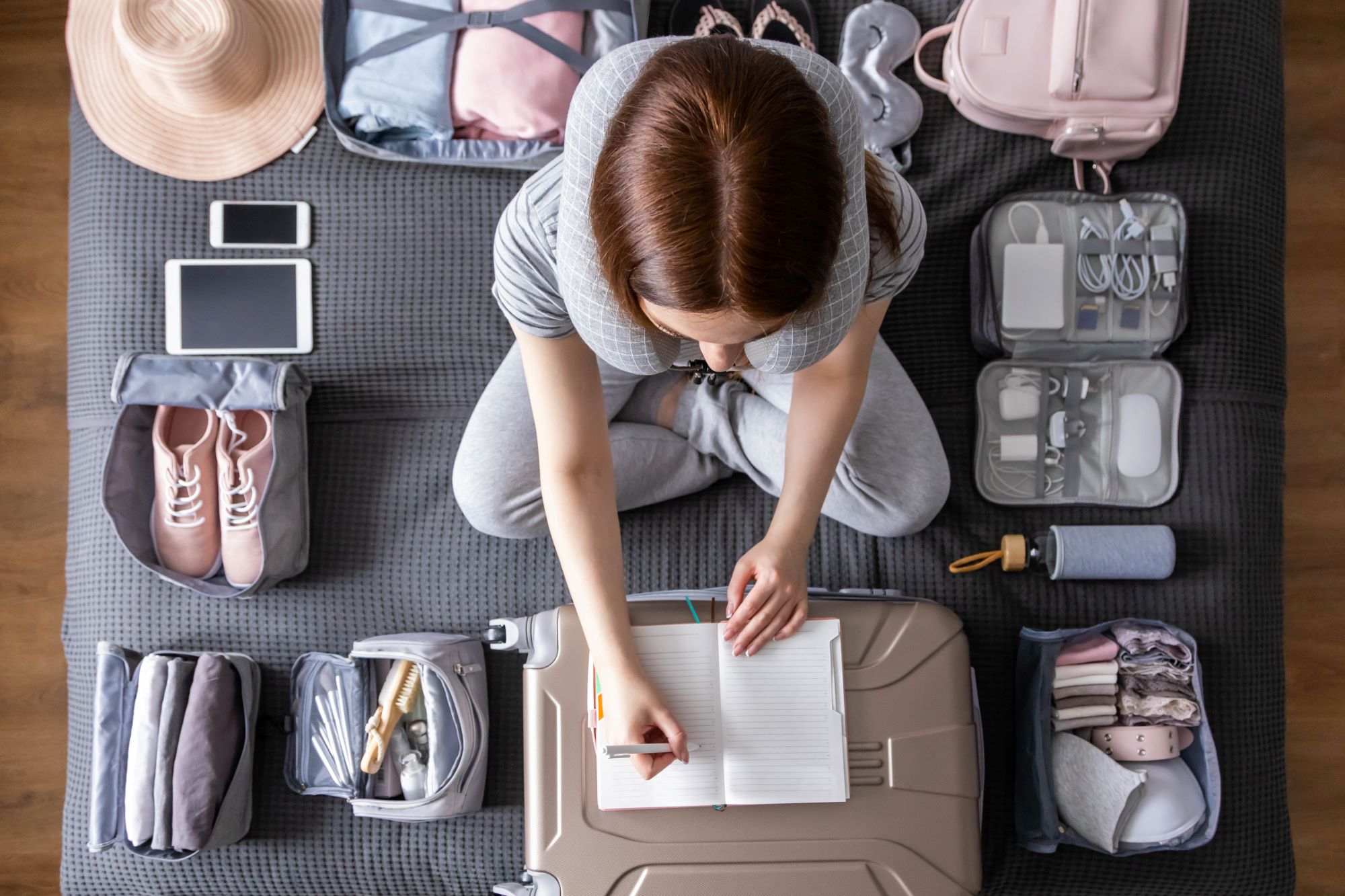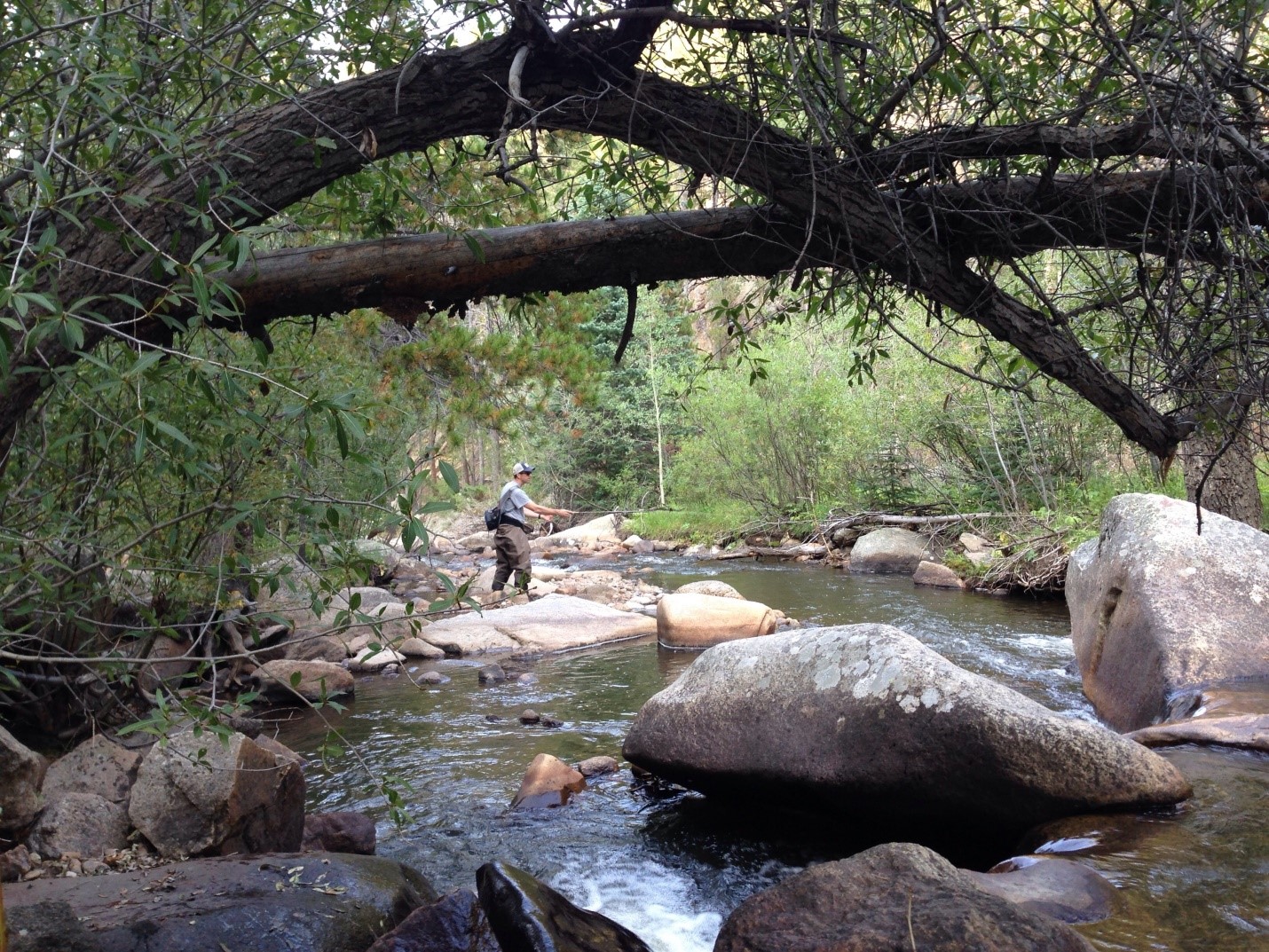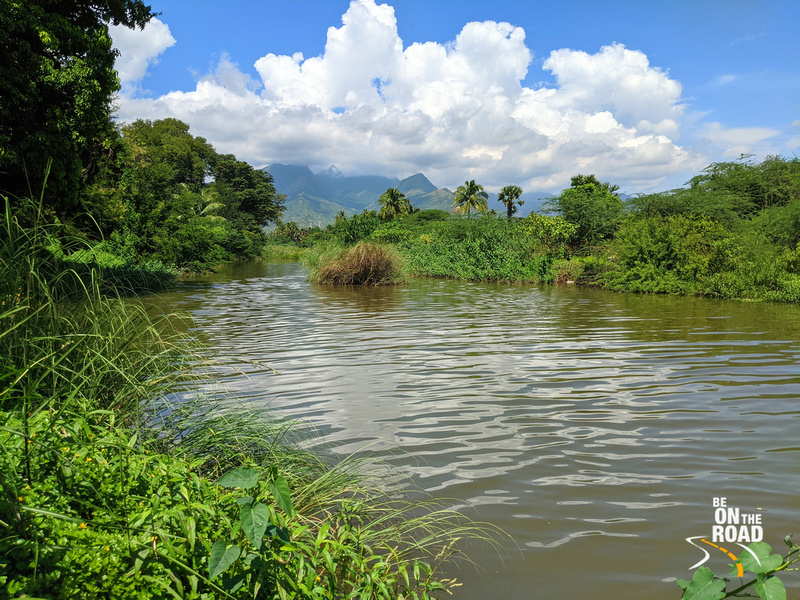
In the hustle and bustle of everyday life, taking a breather and hopping on a plane or a train can be rejuvenating. But that relaxing getaway can quickly turn stressful if you're lugging around heavy suitcases. Here's where minimalist travel bags step in, offering you a stress-free, lighter travel experience. They're stylish, compact, and practical.
The following tips will guide you on how to pack efficiently with these chic, minimalist travel bags. Let's dive in!
1. Choose The Right Bag
Deciding on the perfect bag is the first step toward minimalist travel. The key is finding a bag that is both compact and versatile. It should have enough compartments to keep your belongings organized and be small enough to carry easily. Remember, the aim is to travel light without compromising on essentials.
Versatile Backpacks
Backpacks are an excellent choice for minimalist travel. They're comfortable to carry and offer excellent weight distribution. Choose a backpack that's durable, waterproof, and has various compartments for easy organization.
Stylish Tote Bag
Tote bags, on the other hand, offer a blend of style and practicality. They're spacious, chic, and versatile. A well-chosen tote can serve as a day bag for carrying essentials during sightseeing. With various designs and materials, these bags can cater to every traveler's taste.

Von Baer recommend the Elegance Tote as a travel bag, which includes a 14-inch laptop compartment, a fully-zippable main compartment, and it's made from full grain leather.
Compact Carry-Ons
Finally, a compact carry-on is a minimalist traveler's dream. These bags are designed to fit in overhead compartments, eliminating the need for checked luggage. They provide quick access to your essentials, making airport security checks hassle-free. Opt for a carry-on with a sturdy build and wheels to navigate easily.
Choosing the optimal minimalist travel bag is vital to achieving the art of light travel. To explore luxury luggage options, visit luxebeatmag.com. Their curated selection of high-end luggage caters to the discerning traveler who values aesthetics and practicality.
2. Know Your Bag's Capacity
Understanding a bag's unique dimensions and capacity is essential for proficient packing. Knowing your bag's limits allows for a strategic packing approach, preventing overcrowding and potential item damage.
Creating a checklist of must-have items also helps to reduce the temptation to include non-essentials. This practice cultivates a structured environment inside the bag, ensuring that only necessary items make the cut.
A well-curated, organized bag inevitably weighs less, a cornerstone of minimalist packing. Thus, mastering your bag's capacity becomes integral to a successful minimalist packing strategy, fostering efficient use of space and minimizing travel load.
3. Embrace The One Week Rule
Here lies a golden principle for minimalist packers: Pack for a week, irrespective of the duration of the journey, even if it extends to a month. Adopting this strategy can be a transformative shift in how one packs. It might necessitate the frequent laundering and reuse of clothes, yet the benefit of a significantly lighter bag outweighs this minor inconvenience.
Despite the need for occasional washing, this one-week rule philosophy yields a less burdened bag and a more liberated traveler. While it could be seen as a compromise, it's instead a powerful tactic in minimalist packing, underpinning the idea that less truly can be more when traveling.
4. Master The Art of Folding

Mastering the art of folding is a vital skill in minimalist packing. The way clothes are folded can cause a dramatic alteration in the available space within a bag. Implementing techniques such as rolling or the KonMari method can be significantly helpful.
The strategic application of such folding techniques significantly optimizes bag capacity. Moreover, using the KonMari method or clothes rolling not only enhances space utilization but also results in a neater bag with fewer garment creases. It showcases how a simple adjustment can substantially impact minimalist packing strategies.
5. Utilize Packing Cubes
When packing for a light trip, consider using packing cubes. Often considered a minimalist's secret weapon, these practical tools serve multiple functions. Not only do they aid in maintaining an orderly layout of one's belongings, but they also possess a unique ability to compress items, thus creating more usable space within the bag. Therefore, strategically using packing cubes can significantly enhance the minimalist packing experience, ultimately making them an essential tool in the arsenal of any savvy traveler.
6. Bring Travel-Sized Essentials

When addressing toiletries and other necessities, embracing travel-size versions is a highly strategic move. These compact counterparts conserve crucial space within the bag and align perfectly with flight regulations. The dual benefit of this strategy can help ensure a hassle-free experience at airport security checks.
7. Pack Dual-Purpose Items
An effective minimalist packing strategy hinges on identifying and packing dual-purpose items. If an item can serve multiple functions, it's certainly worth a spot in your bag.
Incorporating versatile clothing items that can transition from casual daytime attire to an elegant evening ensemble, shoes suitable for both leisurely strolls and formal dinners, and a smartphone that doubles as a camera, can streamline your packing process. By including items that fulfill multiple roles, minimalist packing can be mastered, optimizing space and reducing unnecessary baggage weight.
Conclusion
As you embark on your next journey, remember these tips. They will not only make your travel experience lighter and more comfortable but also more enjoyable. So why wait? Grab your stylish minimalist travel bag and start your adventure today. Let's hit the road, traveling light and carefree!
Travel blog of an Indian traveler living his dream of experiencing the world and inspiring others to live their travel dream. Focus areas are travel and visa tips, destination guides, experiential travel stories and traveling as a vegetarian.
Friday, June 30, 2023
Traveling Light: Essential Tips For Packing With Minimalist Travel Bags
Thursday, June 22, 2023
Cycling through the backyards of Kalakad Mundanthurai Tiger Reserve: A Photo Series

Kalakad Mundanthurai Tiger Reserve is one of India’s lesser known tiger reserves and that is home to a rich array of flora and fauna. It covers a massive area that changes from dry thorn forest to dry deciduous, moist deciduous and wet evergreen forests. This tiger reserve is also the starting point of 14 rivers including the iconic Thamarabharani river, which form the lifeline of Tirunelveli, Tuticorin, Virudhunagar and Kanyakumari districts for both drinking water and agriculture. It is home to a large number of dams, hydroelectric power plants, tea estates, spice plantations and so much more.
Luckily for me, I live right at the bottom of the Western Ghat mountains and very close to the buffer zone of the Kalakad Mundanthurai Tiger Reserve. This photo series is from my many cycling trips through the backyards of Kalakad Mundanthurai Tiger Reserve. These cycling trips criss cross through picture perfect villages, lush farm land, umpteen rivers, canals, dams and waterfalls while seeing fantastic landscapes, beautiful flora and fauna and interacting with friendly local people. Hope you enjoy the photo series and may be plan a cycling holiday to this part of the country soon.
Above photo: Many farmers have converted their farm land to lotus ponds as lotus flowers fetch them a better return on investment. This lotus farm is on the banks of the Thamarabharani river at Vairavikulam village.

Above photo: This is the place where the Manimuthar river traveling north from the Manimuthar mountain range joins the Thamarabharani river traveling east from the Agastyamalai biosphere reserve. This river confluence is a gorgeous location for a picnic as it offers stunning views and pristine waters.

Above photo: Most of this belt grows paddy round the year due to water being abundant. Hence, you can chance upon these golden yellow paddy fields for almost four months in a year. This scene is near the village of Earmarpuram enroute to Manimuthar Dam.

Above photo: The entire route between the Manimuthar lower dam and the upper view point is filled with mango orchards and is a heady sight during the summer months. This is my cycle taking a break at this stunning location.

Above photo: This iron bridge is the old bridge over the Thamarabharani river that lies in between Madura coats colony and Papanasam. If you stand on this bridge, you are treated to great views of the Western Ghats and the Thamarabharani river.

Above photo: This is the Manimuthar river that flows from the Manimuthar mountains of the Western Ghats. It is a raging forest river that joins the Thamarabharani river a few kilometers downstream.

Above photo: The Thamarabharani river and its many tributaries is the backbone for all of Tirunelveli district. A fairly short river (just 140 kms long), it carries water all year long. This view is from a bridge over the Thamarabharani river near Chettimedu village.

Above photo: This is the lush view of the Thamarabharani river near the temple city of Papanasam.

Above photo: Massive trees adorn these backyard roads of Kalakad Mundanthurai tiger reserve. This banyan tree near Vairavikulam was one such pit stop on my cycle ride from Kallidaikurichi to Manimuthar Dam.

Above photo: I met these energetic young cyclists while riding from Kallidaikurichi to Papanasam. I asked them to do a wheelie. They tried, but couldn’t. We all had a good laugh over it. This happened somewhere between Chettimedu and Madura coats colony.

Above photo: This lovely view is of the Thamarabharani river with the Western Ghats in the background. The river starts just a few kilometers upstream. The river flows through herbal forests and hence the water is considered medicinal in nature.

Above photo: A lotus farm enroute to Singampetty from Kallidaikurichi. The land of Singampetty and around belongs to a Zamindar. Even today, the ancestral house of the Zamindaar still stands and a part of it has been converted into a hotel.

Above photo: Buffaloes, cows, goats, langurs, monkeys and many other domesticated and wild animals can be seen in the backyards of Kalakad Mundanthurai Tiger Reserve.

Above photo: A photo pit stop in front of the iconic Kannadigan canal (locally known as vaykaal) that begins its journey at Manimuthar Dam. These Kannadigan canals criss cross the region irrigating thousands of hectares of agricultural land.
Friday, June 16, 2023
Essential Gear to have for Backcountry Fly Fishing

Summer brings the chance to catch wild trout in high alpine lakes that have been snowed over for months. Because food is sparse in these waterways, the trout found there are usually looking for an easy meal.
In addition to several lakes, pocket water fishing on mountain streams should not be missed. Pocket water is often plentiful in streams running into and out of alpine lakes and may give numerous hours of entertainment with many fish in crystal-clear water.
With that said, here are some essential things you need before going out.
Clothing
Clothing is a must for high alpine and backcountry fly fishing. Temperatures at high elevations may vary dramatically during the day.
Even in the summer, morning temperatures may be below freezing, with highs in the 70s and 80s by mid-afternoon. This becomes a difficulty when attempting to reduce the amount of gear you carry while still being prepared for anything mother nature throws at you.
Insulated Jacket
Hiking to a backcountry stream or alpine lake sometimes necessitates an early start to avoid the afternoon thunderstorms plaguing the high country throughout the summer.
This often implies cold mornings that need the use of clothing. Get a puff jacket that’s light and packs virtually nothing, making room for additional items needed for a day in the bush.
A raincoat
As previously said, afternoon thunderstorms are common at high altitudes, and there is no better way to prepare than with a comfortable rain jacket. Selecting a jacket that can be worn in various conditions is essential, and allowing space for layering is a good idea.
Pants and Shoes
A good pair of hiking shoes or boots can help you navigate the varied terrain on your trip to these isolated fish. When the temperatures really start to soar, you can throw on a pair of sandals for stream crossings and wet wading.
Fly Fishing Equipment
Fly Rod
Backcountry fly fishing allows you to use almost any fishing rod, depending on the terrain. Smaller fish inhabit smaller mountain streams, enabling lightweight rods to be used for fishing with dry flies all day. Many wilderness fishermen will use fiberglass rods to make capturing these little but stunningly attractive wild fish more enjoyable.
That being said, a quiet day on a high alpine lake is uncommon, necessitating a rod with a greater backbone to punch throws against a strong wind. A 3-5wt fly rod with a floating line from Melton Tackle would suffice in most wilderness situations.
Fly Selection
Because backcountry trout are generally opportunistic eaters, you may keep your fly choices basic. You just need a few impressionistic flies to trick these eager fish. Dry fly fishing chances are many throughout the summer, so being ready for topwater activity is critical.
There may be moments when going underwater is required. Therefore, an array of medium to tiny nymphs (16-22) will usually be enough. Dry droppers (especially for mountain streams), beneath an indicator, and even stripping a single nymph on a slow retrieve might generate a strike in alpine lakes.
Technique
Backcountry and high mountain fly fishing during the summer allow one to avoid congested tailwaters and freestones. Take time to appreciate the numerous marvels that the outdoors has to offer. When you arrive at an alpine lake, take some time to set up your gear and examine the water.
Alpine lake trout often patrol the shorelines in a pattern. By observing the trout's eating patterns, the astute fisherman may determine when and where to lay the ideal dry fly. Once you've worked out the pattern, lead the fish several feet with a dry fly on a long leader (a 5x mono leader about 9-12 feet is a good option), and be ready!
Because of the steepness of the terrain, pocket water is plentiful in high mountain streams and alpine lakes. Dapping your fly near a plunge pool may attract an opportunistic small-stream trout. You may need a foot or two of fly lines from your guides. Watch for shadows, and try not to scare these fish with your rod.
Miscellaneous Equipment
The following are excellent basic backcountry supplies that guarantee an enjoyable and safe day. Maintaining a light pack is a fantastic objective, but don't forego the basics.
Back Pack
A waterproof pack or backpack is an excellent choice for backcountry excursions. Keeping extra layers of clothing and supplies dry in case the temperature drops is vital.
Buy a backpack with enough storage for a day's worth of water or drinks, food, drink, layers, and the option to carry a fly rod tube in some fashion. Hiking for kilometres with a constructed rod might be difficult, and you risk damaging it, so we suggest packing it in.
Maps
National Geographic compiled every USGS topographic map into a single, user-friendly web-based platform.
It's good to over-prepare before venturing into the outdoors. We suggest getting a topographical map, downloading the area you want to visit on Google Maps (for offline use), or utilizing the fantastic digital topographical maps made available by National Geographic. These are also excellent tools for finding wilderness lakes and streams in the first place! In the case of an accident, letting someone know your intentions (someone you trust with the location of your favourite blue lines, of course) is always a good idea.
Essentials
Finally, in the bush, you should have a lighter, flint, TP, a pocket knife, and all standard first aid items. A GPS device is a wise investment if you want to carve your own tracks.
If your favourite rivers and lakes are jam-packed with recreational boaters and floaters this time of year, we recommend researching and organizing a high-alpine trip! Getting your hands on a wild, magnificent trout is just half the enjoyment of wilderness fly fishing. The journey, the wilderness, and the time away from congested rivers should be considered. We assure you will be satisfied if you take the time to check out nearby sites.
Tuesday, June 13, 2023
Mannarkoil Rajagopalaswamy Temple: Magnificent 10th Century Temple with an Asthanga Vimana

This is a magnificent three-storied temple that overlooks the lush forests and mountains of the Western Ghats. One can see many inscriptions in this historical temple dating back to the Chola period. Situated right between the Thamirabharani and the Gadananathi rivers, this temple built by a Chola king has seen significant contributions from Chera, Pandya and Nayak kings. I am talking about the Rajagopalaswamy temple at Mannarkoil, a magnificent 10th century temple with an Ashtanga vimana.
This temple is also called the Kulasekara perumal temple after Kulasekara Azhvar, one of the 12 Vaishnavite saints, who attained moksha here. A Chera king, Kulasekara Azhvaar, defeated Chola and Pandya kings and was a dominant force in his prime. He spent his last 35 years serving Lord Vishnu by doing daily pooja and abhishekham. It is in recognition of this service that the temple is called Kulasekara Perumal koil, the only historical perumal koil to be directly named as an Azhvaar perumal koil.

The highlight of this temple has to be its Ashtanga vimana, meaning 3 floors of sanctum sanctorum, one above the other. On the ground floor, Lord Vishnu is in the standing position. Right above it, on the first floor is the lord in a seated position. And on top of it, on the second floor is the lord in a reclining position. The top most tier is the most beautiful as it has intricate wooden carvings on its walls and ceilings and which were added by the Chera kings. Due to the Ashtanga vimana, one can see the temple from a different perspective and also admire the view of the lush forests and the mountains of the Western Ghats in the background.

The main deity is Lord Veda Narayana Perumal and his consorts are goddesses Vedavalli Thaayar and Bhuvanavalli Thaayar. The main deity faces east and the Utsavar is Rajagopalaswamy with Garuda (a specialty and a feature found only at the Srivilluputhur divya desam).

This east facing Rajagopalaswamy temple has one entrance and two prakarams, an ardhamandapam and a mahamandapam. The main deity, Lord Vedanarayana perumal’s idol is made of Sudha model with different herbs. The temple campus is also known as Vedapuri as the sound of Vedas is always heard here.

As you take a walk around and up the temple, you will discover the shrines of goddesses Vedavalli and Bhuvanavalli, Lord Narasimha, Lord Visvaksena, the Vaishnava saint Kulasekara Azhvaar, Vaishnava acharyas Ramanuja and Manavala Mamuningal.

There are life size statues of Lord Rama and other gods, kings with folded hands forming part of the monolithic pillars. Just above the foundation inscriptions at regular intervals are little square of 5 inches, that have scenes of the Ramayana sculpted on them. The yali row is also gorgeous with riders and with some elephants as well.

As this is a holy land with echoes of the Vedas, people visit this temple to pray for a strong academic foundation, to get married, to pray for children and for overall family welfare and improvement in occupation.

Visit the Mannarkoil Rajagopalaswamy temple for its magnificent ashtanga vimana, gorgeous views, rich history and stunning architecture. Early mornings are the best time to visit the temple as they offer the best views and the weather is very pleasant. I would definitely recommend this 10th century temple to every art, culture and temple lover.

Festivals:
1) 10 day Brahmotsavam in Chithirai month (April 15 to May 15)
2) Procession of Azhvaar in Pushpa Pallaku in Thai month (January 15 to February 15)
3) Theppotsavam in Masi month (February 15 to March 15)
4) Pre event practice session of Kaisika Puranam for the Thirukkurungudi

How to reach there:
Mannarkoil is located about 7 kilometers away from Ambasamudram, the nearest large town. The nearest bus station and railway station would be Ambasamudram, which is connected well with the cities of Tirunelveli, Tenkasi and Madurai. The nearest airport would be Tuticorin, about 80 kms away.

Best season to visit:
One can visit the temple all year round if you plan on visiting in the early hours of the morning. However, if you are looking for cool weather, then opt for the months from October through February.

Temple timings:
The temple is open from 7 AM to 11 AM and from 5 PM to 7:30 PM.

Where to stay:
The nearest place with decent hotels would be Ambasamudram. Hotel Ambai grand is the best option here.
If you wish for luxury, I would recommend trying the hotels at Tirunelveli – GRT Regency, Janakiram, Aryas.
If you wish to stay in slightly cooler weather, you should try the resorts in and around Courtallam.
If you wish to stay in pristine nature, I would recommend that you stay at the forest rest houses in Kalakad Mundanthurai Tiger Reserve.
If you care for a true rustic experience, I would recommend that you stay at any of the homestays or guest houses in Kallidaikurichi village agraharam.

Where to eat:
You can find some basic snacks with tea/coffee near the temple at Mannarkoil, but if you want something more elaborate, I would recommend you head either to Hotel Ramanas or Hotel Gowri Shankar at Ambasamudram. Both of them serve delicious vegetarian tiffin items and meals at reasonable prices.

Other nearby tourist attractions:
1) 10th century Kailasanathar temple at Brahmadesam
2) 10th century Valiswara temple at Thiruvaleeswaram
3) 1000 year old Papanasanathar temple at Papanasam: Where you can wash all your sins away
4) Karaiyar Dam: Wildlife and nature holiday destination in India’s deep south
5) Kalakad Mundanthurai tiger reserve and its mighty waterfalls
6) Kallidaikurichi: The village of the saaral season
7) Nellaiappar temple at Tirunelveli: A 7th century cosmic dance wonder
8) Courtallam: The herbal bath holiday destination of Tamil Nadu
9) Tiruchendur Murugan Temple: Sea shore magic
10) 13th century Kasi Visvanathar temple at Tenkasi
11) Punalur suspension bridge: Historical gem of Kerala
12) Lesser known Kerala mountain railways: Treat for nature lovers
13) Sivasailam: One of the wettest places during the north east monsoon in India
14) Manjolai: The offbeat hill station of Tamil Nadu
15) Manimuthar Falls: A great forest waterfall
16) Thenmala forest and Palaruvi falls: Offbeat nature and wildlife getaway
Friday, June 09, 2023
Sivasailam: One of the Wettest Places during the North East Monsoon in India

Sivasailam is famous for its 500 plus year old Sivasailanathar Paramakalyani temple built by the Pandyas. While this temple is absolutely gorgeous and deserves a separate article in itself, this article is dedicated to this green village that is nestled in the Western Ghats of Tamil Nadu.
Surrounded by Velli malai, Mulli malai and podhigai malai, Sivasailam is a lush green village that is located on the bank of river Gadananathi in the Tenkasi district of India. Like my ancestral village of Kallidaikurichi, Sivasailam also enjoys the Saaral season from the months of Chithirai (mid April) to Puratasi (mid October). During this season, there is a mountain breeze coupled with rain sprinkles that is omnipresent and this makes this village very pleasant and cool.
But, the main claim to fame for Sivasailam is during the North East monsoon (October to December) when it turns into one of the wettest places in India. Along with Manjolai, Oothu and Kudraivetti, Sivasailam receives the heaviest rainfall during the North East monsoon. This copious rainfall fills the Gadananathi dam to the brim and swells the Gadananathi river before it dumps all the water into the Thamarabharani river further downstream.

If rural getaways in the Western Ghats are your thing, then I would definitely recommend that you visit Sivasailam in India’s deep south. Sivasailam offers a perfect mix of pristine nature, an offbeat rural getaway and a gorgeous Shiva temple. It is pleasant during the summers and during the South West monsoon and is absolutely lush and wet during the north east monsoon. Each season allows you to experience a different side of Sivasailam.

Nearest bus station: Alwarkurichi, about 7 kms away
Nearest railway station: Alwarkurichi, about 7 kms away
Nearest airport: Tuticorin airport, about 85 kms away